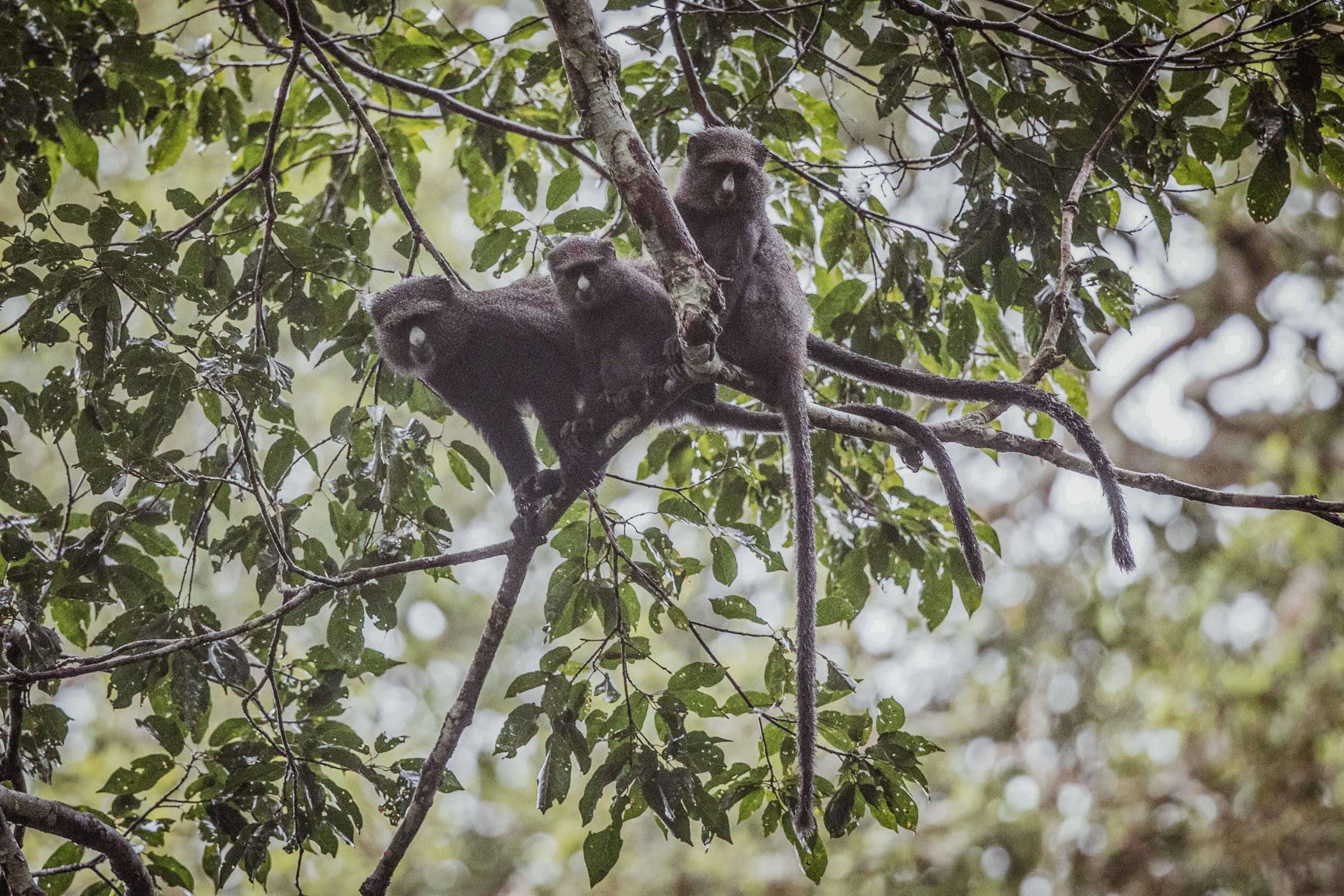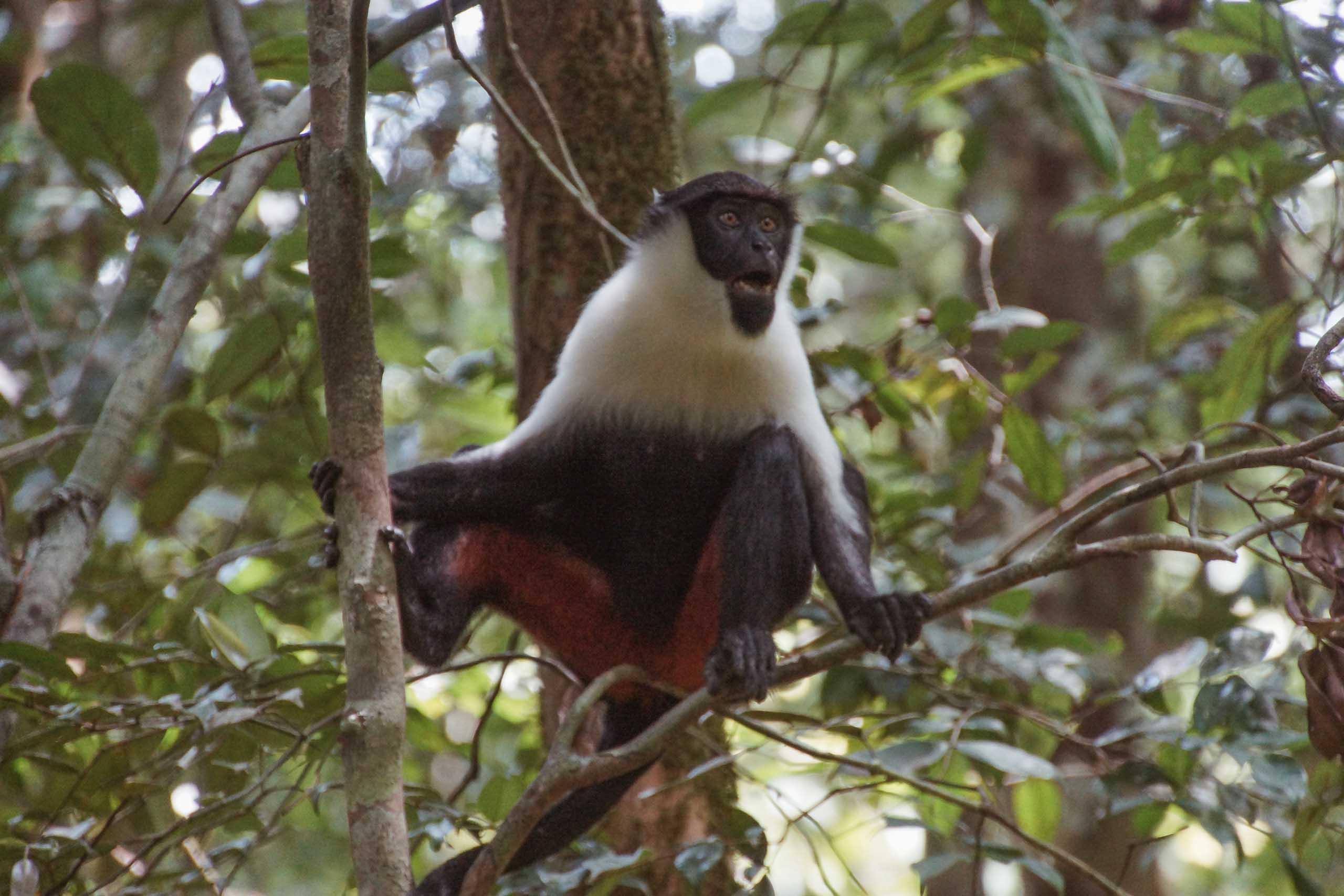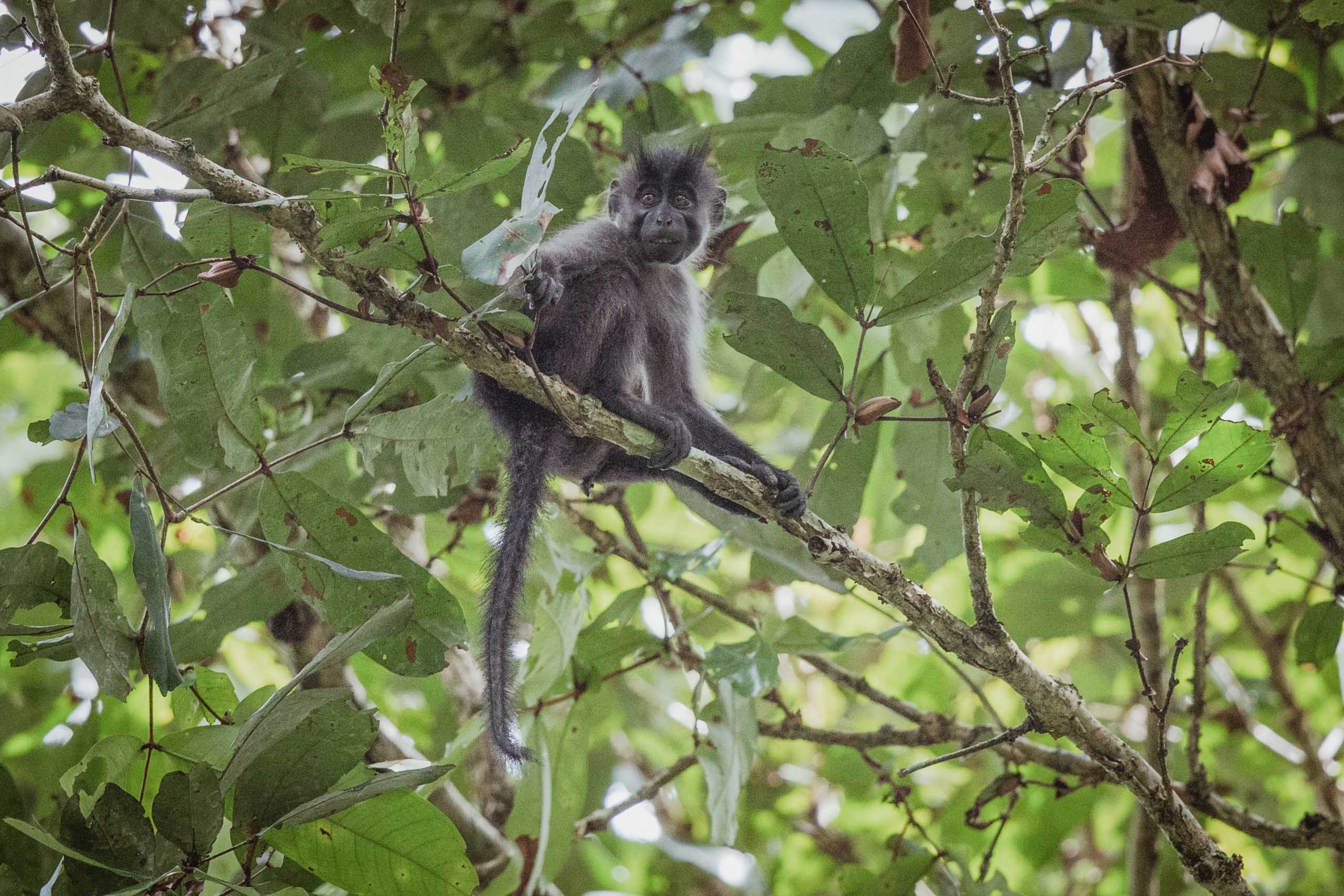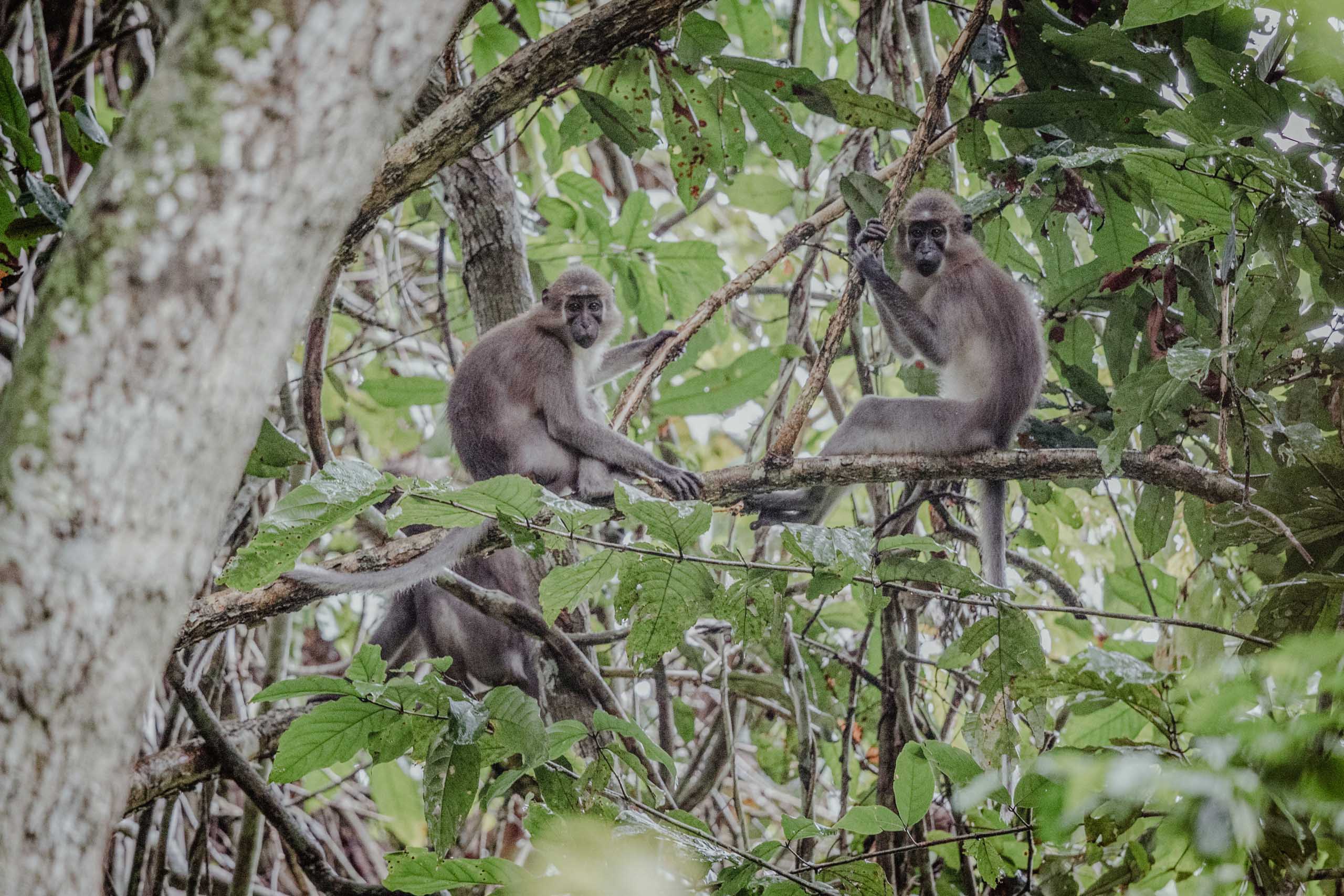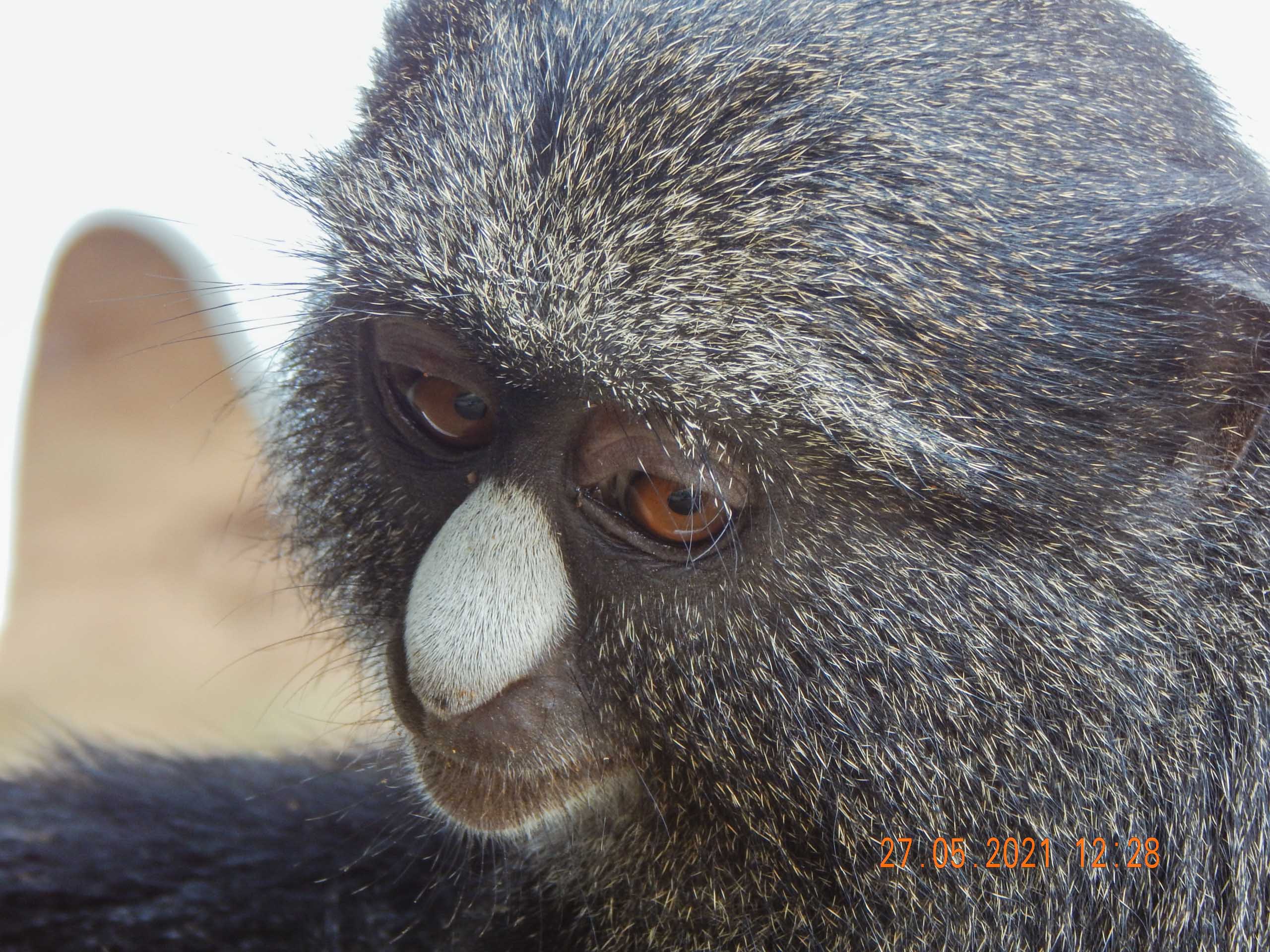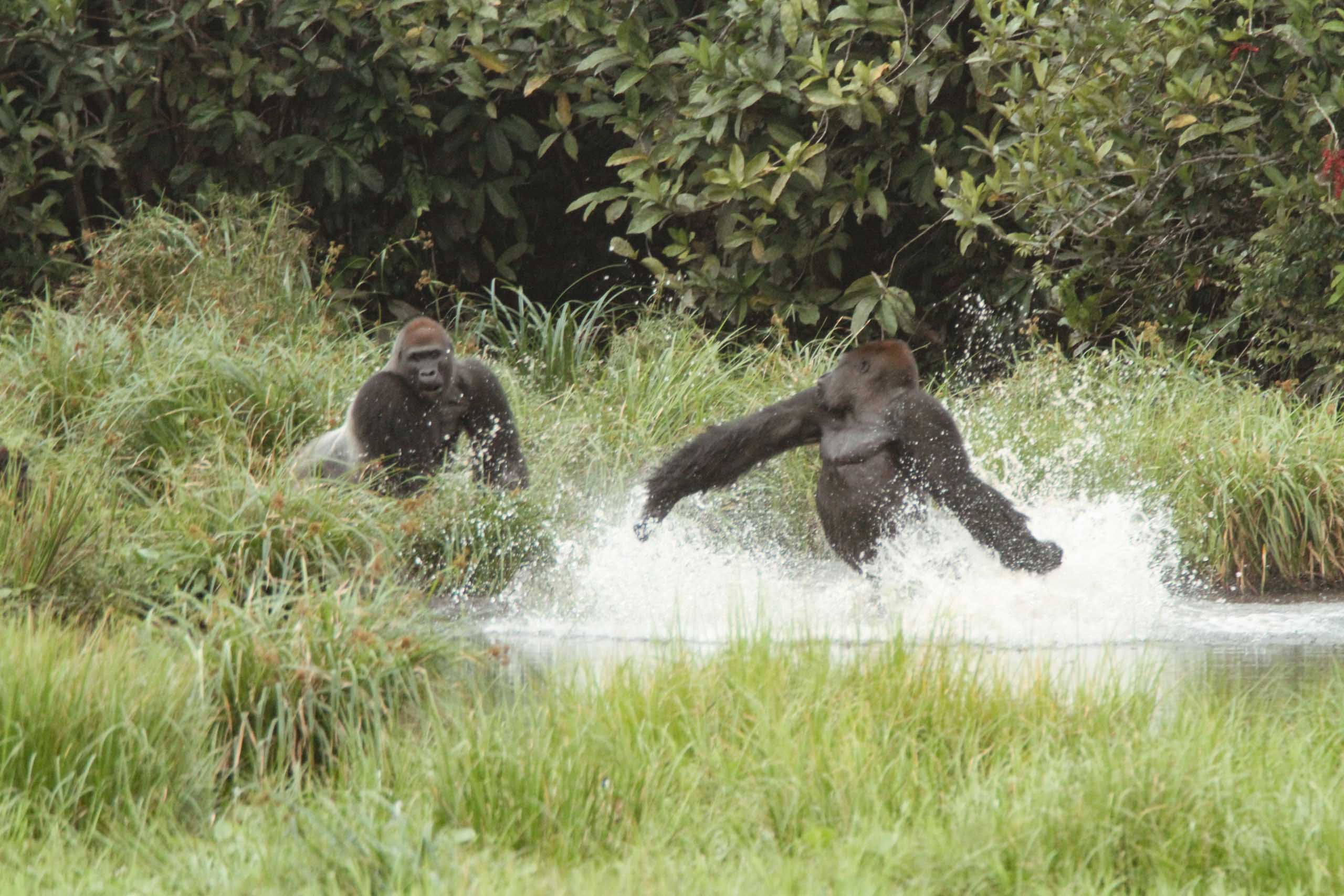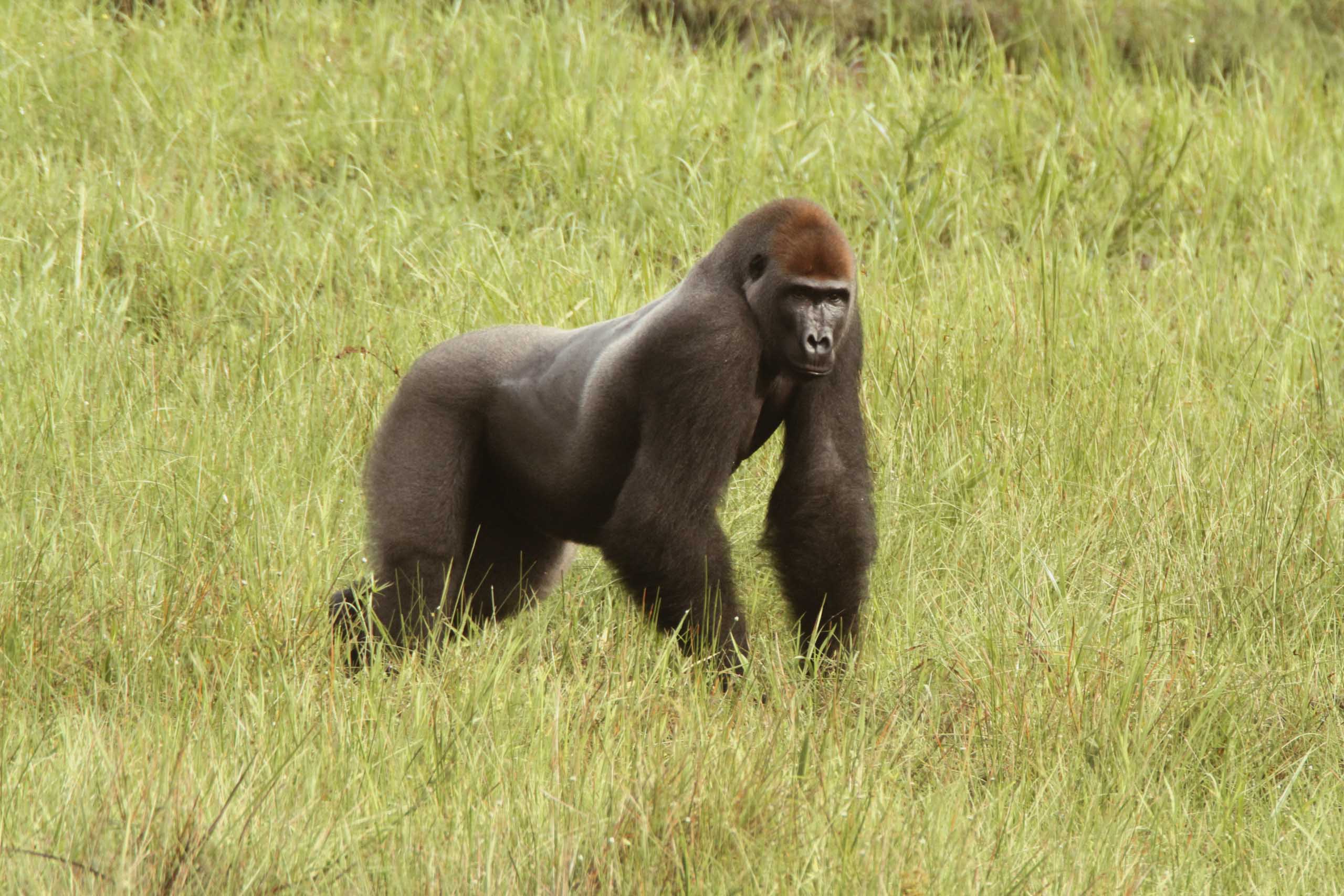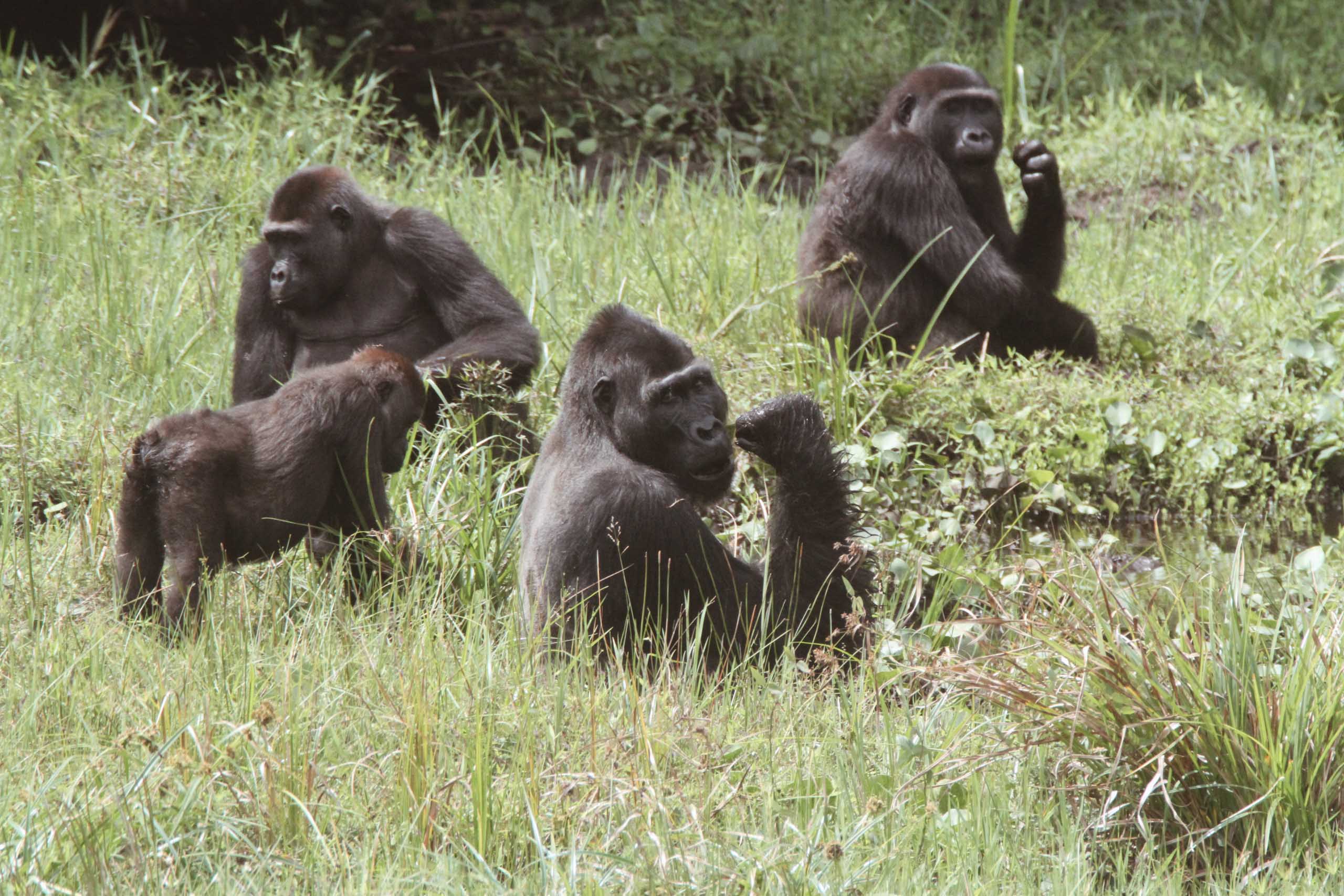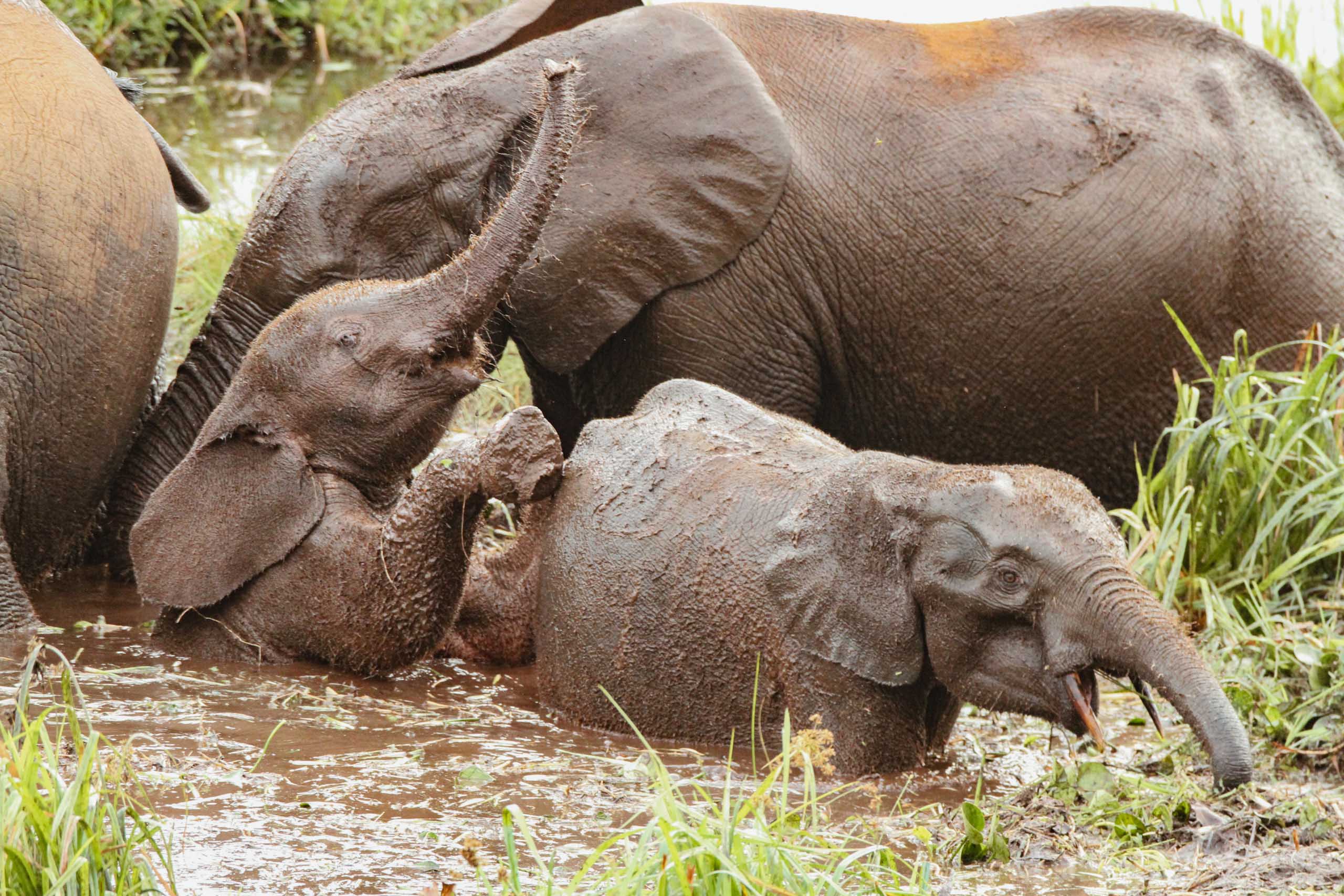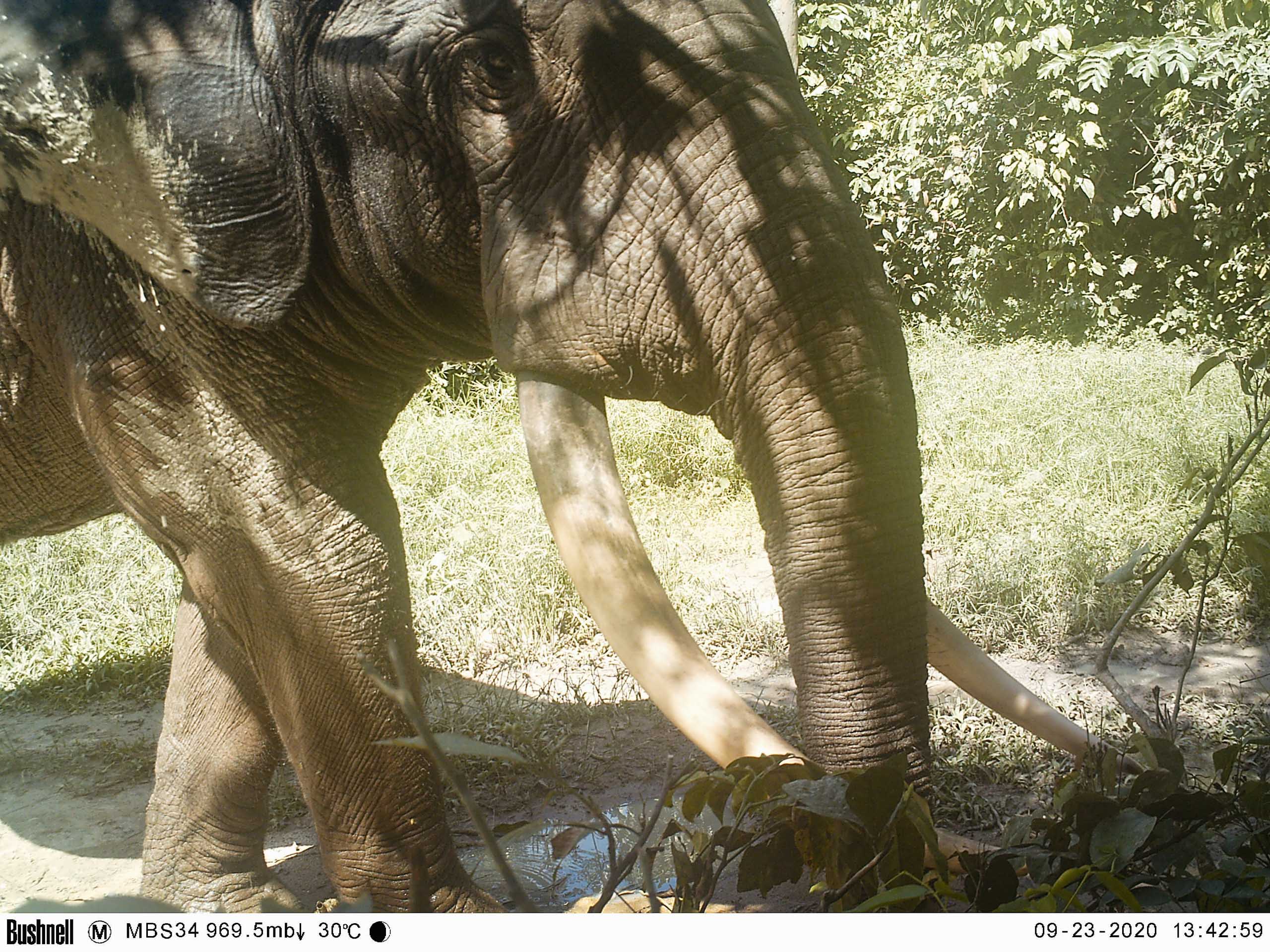Current Projects
An overview of currently open projects
Feel free to contact me with any questions or if you would like more information.
-
Sexual dimorphisms in the evolution of forest guenons’ call usage and function
In some non-human primate species, male and female vocalizations show fundamental differences in call morphology, call assemblages or call usage. For instance, previous research on forest guenons revealed differences in the way in which male and female alarm calling was changed as a function of predation pressure or how females and males use their alarm calls to prevent predation. Using simple and combined playback experiments, predator model presentations and cross-modal simulations of predation events, research under this framework aims to clarify whether these differences reflect an evolutionary disparity in call function between males and females and if this communicative dimorphism between males and females also extended to implemented cognitive capacities.
Ongoing studies
- Vocal recruitments
- Intentional manipulation
- Vocal recognition
- Call assemblages in their evolutionary context
-
Developmental and ecological factors shaping vocal outputs in forest guenons
Comparative approaches to communitive flexibility in vocal production often target to what degree the phylogenetic relationships between species mirror similarities in the acoustic structure of vocal repertoires. This is in line with the notion that non-human primate vocalizations are rather hardwired in their structure, possessing only little vocal production flexibility. However, the full development of innate acoustic structures and its usage can be subject to some degree of variability within a species. I here particularly investigate the ecological and developmental factors that may account for vocal flexibility using playback experiments and observational methods including scan and focal sampling.
Ongoing studies
- Heterospecific eavesdropping and the impact of ontogenetic experience
- Population-specific alarm calling and the impact of competition
-
Joining together: Monkey multi-species communities
Forest guenons often form heterospecific associations and spend considerable amounts of their time together. These temporal communities are usually formed on the basis of cost – benefit ratios that take benefits from predation avoidance but also costs from feeding competition into consideration. Additionally, these associations can be subject to seasonal changes and within the same associated species, different groups could well have different interests in maintaining such assemblage. I here aim to give the first comprehensive insight into the composition and variability of heterospecific associations involving putty-nosed monkeys in the Nouabalé-Ndoki National Park located in the Congo basin by collecting observational data in undisturbed, natural habitats.
-
Western lowland gorilla behaviour and social cognition
Due to their phylogenetic proximity, great apes are excellent models to reconstruct human behavioural and cognitive evolution. Compared to chimpanzees and orangutans, gorillas are still underrepresented in this approach. This is particularly surprising given ample differences between great ape social systems and diets, which suggests that gorilla research will considerably complement our understanding of our own evolution. Using scan and focal observational samples, acoustic recording and video analysis, the social component in the development of behavioural traits and relationships are subject to the following specific studies.
Ongoing studies
- Western lowland gorilla object manipulation and social learning
- Male – male social relationships
- The form and function of gorilla chestbeats
-
Western lowland gorilla life history and population dynamics
Analysing long-term demographic data from the world’s longest running field study on western lowland gorillas, we here investigate specific aspects of male gorilla life history, comparatively investigate the impact of nutritional sufficiency and extrinsic mortality on female life history patterns in mountain (G. beringei beringei) and western lowland gorillas, and analyse population dynamics in a population in the northern Republic of Congo.
Ongoing studies
- male gorilla dispersal to become solitary
- male gorilla reproductive careers
- male gorilla maturation
- female life histories in the genus gorilla
- population dynamics in western lowland gorillas visiting Mbeli Baï
-
Forest elephant social dynamics
Sustainable population sizes are notoriously difficult to determine for species only forming temporal social units, like forest elephants living in fission-fusion societies. To better extrapolate the number of individuals needed to express natural social dynamics, detailed information about the structure and the coordination of these fluid social systems are of utter importance. Here we investigate forest elephants’ social structure and dynamics more systematically. We are particularly interested in individual differences in the connectivity within the social network (i.e., number of different association partners for individual females) and the short-term stability of associations. Additionally, we aim to clarify how forest elephants organize and coordinate their group movements while maneuvering in a natural forest clearing. Systematic observational data and video analysis are combined to ultimately answer these questions.
Collaborators
Christoph Dahl, Taipei Medical University, Taiwan; Georgine Szipl, independent scientific consultant, Austria; Klaus Zuberbühler, University of Neuchatel, Switzerland; Martha Robbins & Andrew Robbins, Max Planck Institute for Evolutionary Anthropology, Germany; Nouabalé-Ndoki Foundation, Republic of Congo; Richard Wadsworth, Njala University, Sierra Leone; Robin Morrison, The Diana Fossey Fund International, University of Exeter, Rwanda, UK; Thomas Breuer, World Wide Fund for Nature (WWF), Germany; WCS – Congo program, Republic of Congo
